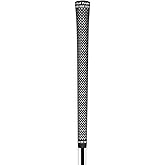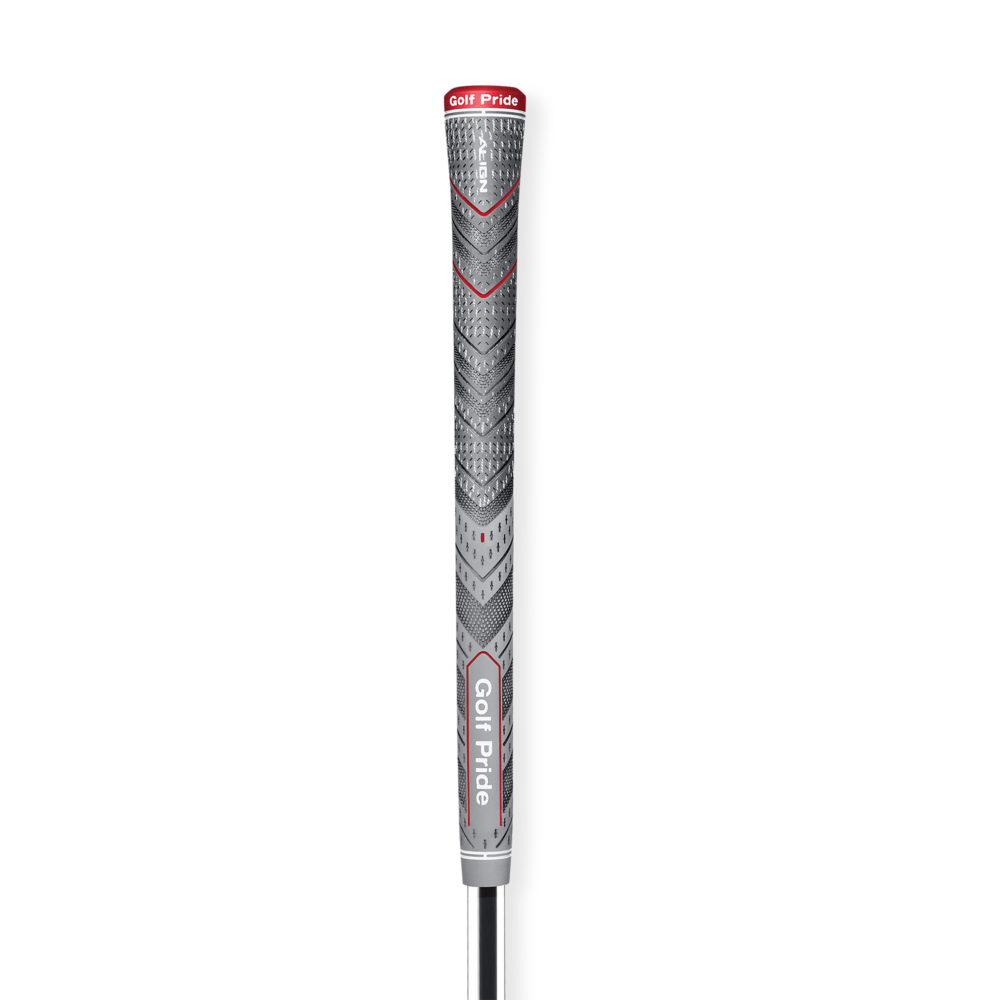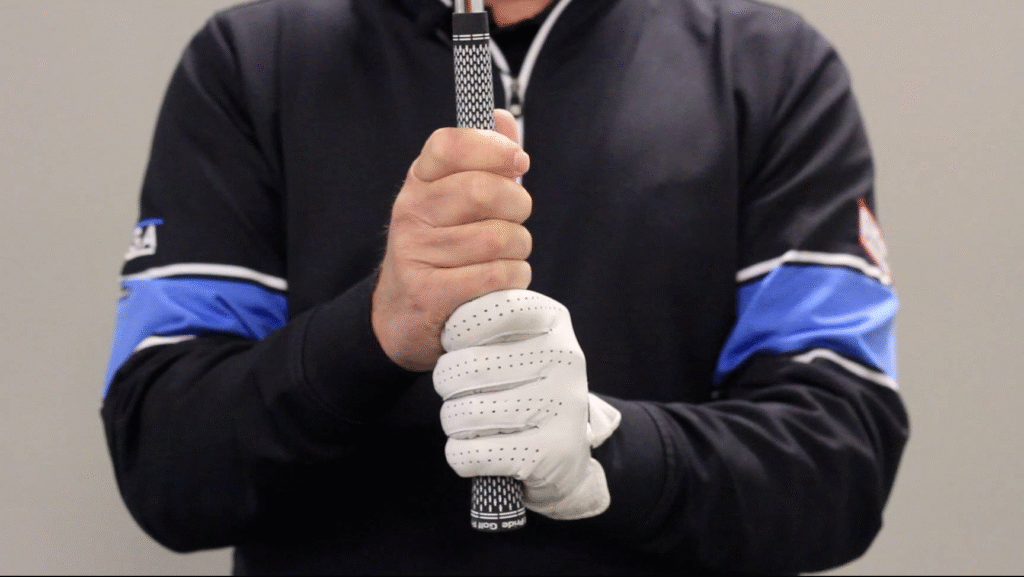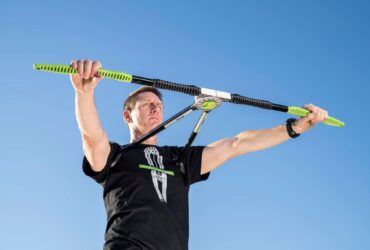The golf grip might seem like a small detail, but it directly impacts your swing path, ball flight, and shot accuracy. A poor grip can cause slices, hooks, or inconsistent shots, while a proper grip helps create balance and control.
A correct grip ensures:
- Better club face control during impact
- Consistent and accurate shots
- Improved distance and power
- Comfortable swing mechanics
Golf Grip Popular Brands
Golf Pride: Golf Pride is the world’s most trusted name in golf grips, chosen by professionals and amateurs alike. Known for innovation, comfort, and performance, Golf Pride grips provide superior traction, feel, and control in every swing. Whether you prefer a classic rubber grip, a soft corded texture, or an advanced alignment design, Golf Pride delivers precision-engineered options for every playing style. With decades of expertise and cutting-edge technology, Golf Pride continues to set the standard in grip performance — helping golfers achieve consistency, confidence, and power on every shot.
 Golf Pride Pro Only Cord Golf Grip – Putter Grip with Rubber
$22.95
|
 Golf Pride Tour Velvet Golf Grip – Durable Rubber Grip for Clubs – Features Anti-Slip
$20.00
|
 Golf Pride MCC Plus4
$59.00
|
|
|---|---|---|---|
|
Brand |
Golf Pride | Golf Pride | Golf Pride |
| Color | Red-Grey |
Black |
Grey |
| Grip Type | Red Star, Pistol |
1-Pack |
1-Pack |
| Grip Size | 72 cc |
Jumbo |
Midsize |
| Product | 10.63″L x 1.18″W | 11.81″L x 7.87″W |
Lamkin: Lamkin Grips are engineered to deliver exceptional feel, control, and durability for golfers of all skill levels. Trusted by professionals worldwide, Lamkin combines advanced materials with innovative surface textures to enhance traction and consistency in every swing. From the popular Crossline to the innovative ST and UTx series, Lamkin grips offer unmatched comfort and performance in all weather conditions. With nearly a century of craftsmanship, Lamkin continues to set the standard for quality and reliability — helping golfers play with confidence, stability, and precision from the first tee to the final putt.
| Image | Product | Features | Price |
|
1
 |
Lamkin |
Lamkin Sonar+ Hero Golf Grip |
|
|
2
 |
Lamkin |
Lamkin Crossline Golf Club Grip, Standard, .60 Round, For Maximum Feel and Stability, Black/White |
1. What is a golf grip?
Golf grip refers to how you hold the golf club in your hand. It is a connection point where the first and only contact between the player’s body and the club occurs. If you hold the club incorrectly, no matter how good your swing is, the speed and direction of the ball will not be correct.
2. Types of golf grips
There are three main types of grips in golf:
2.1. Overlapping Grip
This is the most common grip, especially among professionals.
- For right-handed players: The pinky finger of the right hand is between the index and middle fingers of the left hand.
- This helps the hands work together.
- Suitable for powerful hits and control.

Historically, the overlap has been favored by players like Harry Vardon due to its connection to the club and its reputation for providing a smooth swing with good feel.Although most amateur golfers still use the overlap grip, modern data suggests that the interlocking grip is now used by a slightly higher percentage of PGA Tour professionals.
2.2. Interlocking Grip
In this grip, the pinky finger of the right hand and the index finger of the left hand are locked together.
- This is convenient for players with small or weak hands.
- Legends like Tiger Woods and Jack Nicholson have used this grip.

The interlocking grip is very popular in golf, especially among professionals, largely due to its endorsement by top players like Jack Nicklaus and Tiger Woods. A 2024 review found that it was used by more than 58% of players at the PGA Championship. The grip’s popularity stems from the secure and connected feel it creates between the hand and the club, which can lead to much greater clubface control and is often best suited to golfers with smaller hands.
2.3. Baseball Grip / Ten Finger Grip
In this grip, all ten fingers of both hands are on the club, just like holding a baseball bat.
- Easy to understand for beginners.
- Suitable for children or elderly players.

The ten-finger grip, or baseball grip, is very accessible for beginners and those who want a natural, comfortable feel.It is often recommended for children, the elderly, or those with arthritis, but is less popular among professional players who often require more control and Prefers interlocking or overlapping grips for consistency, although some coaches advocate a ten-finger grip to develop feel and strength.
3. How to grip golf correctly
Follow these steps for the correct grip:
3.1. Grip positioning
- Left Hand (Lead Hand): Hold the club so that it goes from your fingers to your palm. The club will be on the palm heel pad of your hand.
- When viewed from above, the club will appear to be two or three “knuckles” on the left hand.
3.2. Right Hand (Trail Hand)
- Grasp the club from below with your right hand.
- Do not touch the club with the palm of your hand, but rather hold it with the fingertips.
- The index finger and thumb of the right hand will form a “V” shape and point towards the right shoulder.
3.3. Grip Pressure
- Don’t hold too tightly. If the grip is too tight, the swing will be difficult.
- Again, if you hold it too loosely, the club can slip out of your hand.
- Tip: It’s ideal to apply pressure like you’re holding a toothbrush.
4. Common grip mistakes
Many new players make some common mistakes that affect their entire swing and shot. Below is a list of some of the mistakes:
4.1. Holding the club too tightly
Holding the club tightly causes the shoulder and arm muscles to become stiff, resulting in an unnatural swing.
4.2. Wrong hand position
Many left-handed people hold the club in their palm, which is not correct. It reduces control of the ball.
4.3. Incorrect “V” position instructions
If you point the “V” of both hands in the wrong direction, the ball can slice to the left or right.
4.4. Performing isolated manual tasks
If both hands work separately, the ball will not move properly. The grip should be positioned in such a way that both hands work together.
5. Golf Grip Practice Tips
5.1. Practice looking in the mirror
Practice your grip in front of a mirror every day. This will help you understand whether you have the correct “V” position and knuckle visibility.
5.2. Get used to holding a club at home
Sit with the club in your hand for at least 10-15 minutes every day with the correct grip. This will help your hand muscles get used to it.
5.3. Record and analyze videos
Video your grip and analyze it yourself, or send it to a trainer.
5.4. Follow the professionals
Watch YouTube or PGA Tour videos to learn how the pros grip.
6. Relationship between golf grip and ball shot
If you don’t have the correct grip, your shot may suffer from the following problems:
- Slice: The ball spins to the right — usually caused by an open clubface and a weak grip.
- Hook: The ball bends more to the left — occurs when there is an overly close grip or excessive pressure on the hand.
- Top: The ball goes low — lack of club control and a weak grip are to blame.
- Fat shot: The club hits the ground too hard — this happens if you can’t move your hands in time.
7. Grip Maintenance
- It is a good idea to change your grip every 6 months.
- Keep your grip clean — dirt and sweat make your grip slippery.
- Use gloves if your hands get sweaty during hot or rainy weather.
8. Some helpful tools for teaching golf grip
Teaching the proper golf grip is crucial for building a strong foundation in any golfer’s swing. Several tools can assist with this. Grip trainers, such as molded training grips, guide correct hand placement. Alignment sticks help reinforce hand and arm positioning. Grip pressure sensors teach players to avoid holding the club too tightly. Video analysis and grip charts offer visual feedback, making corrections easier. For beginners, oversized or color-coded grips can simplify learning. Using these tools consistently helps golfers develop muscle memory and confidence, leading to better performance on the course. The right grip is the first step to a great swing.
Following
Learning and applying the correct golf grip forms the foundation of your game. The type of grip — such as interlocking, overlapping, or baseball grip — depends on personal comfort and performance. However, no matter which style you follow, it is very important to maintain proper hand position, pressure, and balance.
The most effective way to improve your skills as a golfer is through repeated practice and regular work on your grip. Remember, even a small change can make a big difference.
Although it may take time at first, with patience and practice, you can develop a steady, reliable, and effective golf grip — which will lead to better scores and confidence.




Leave a Reply